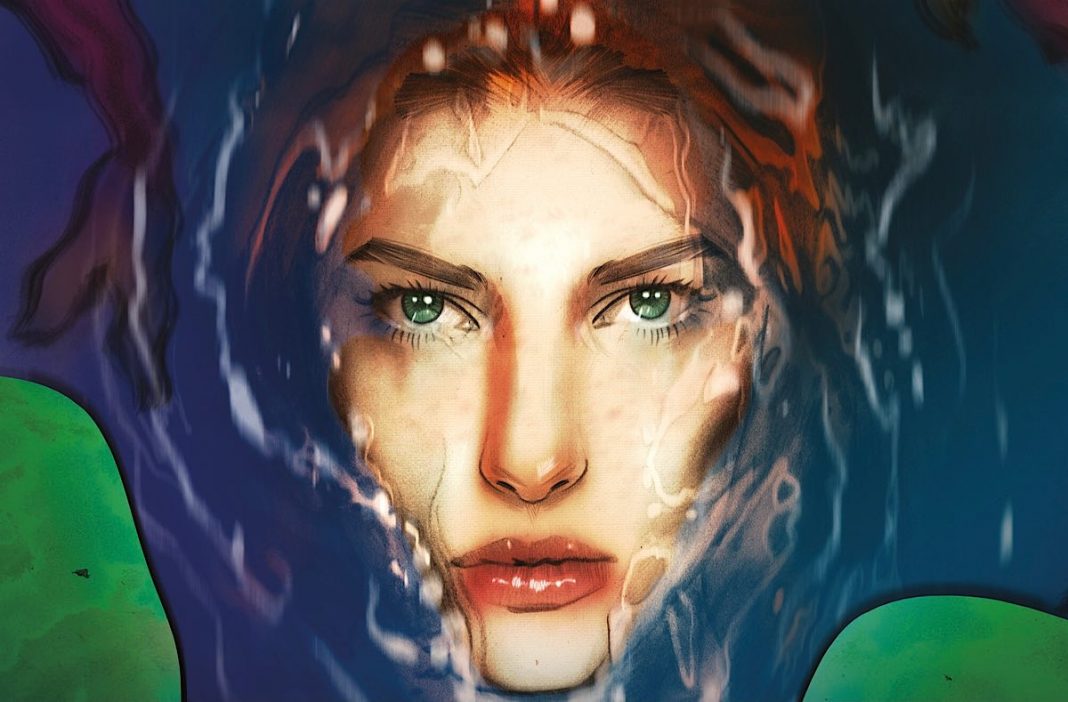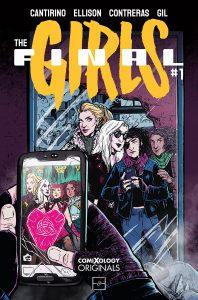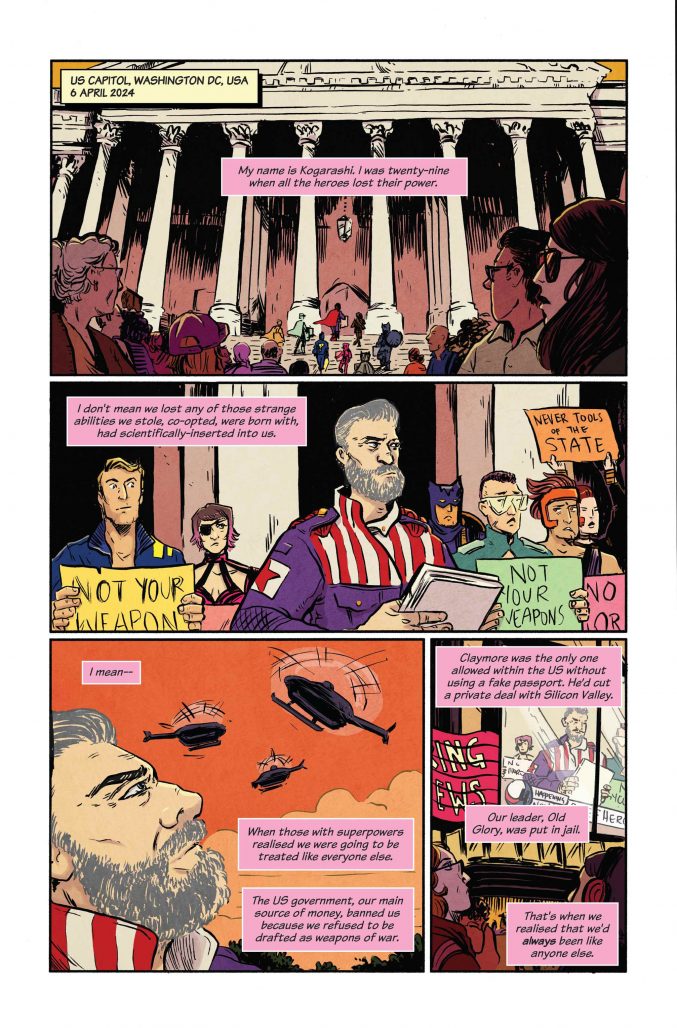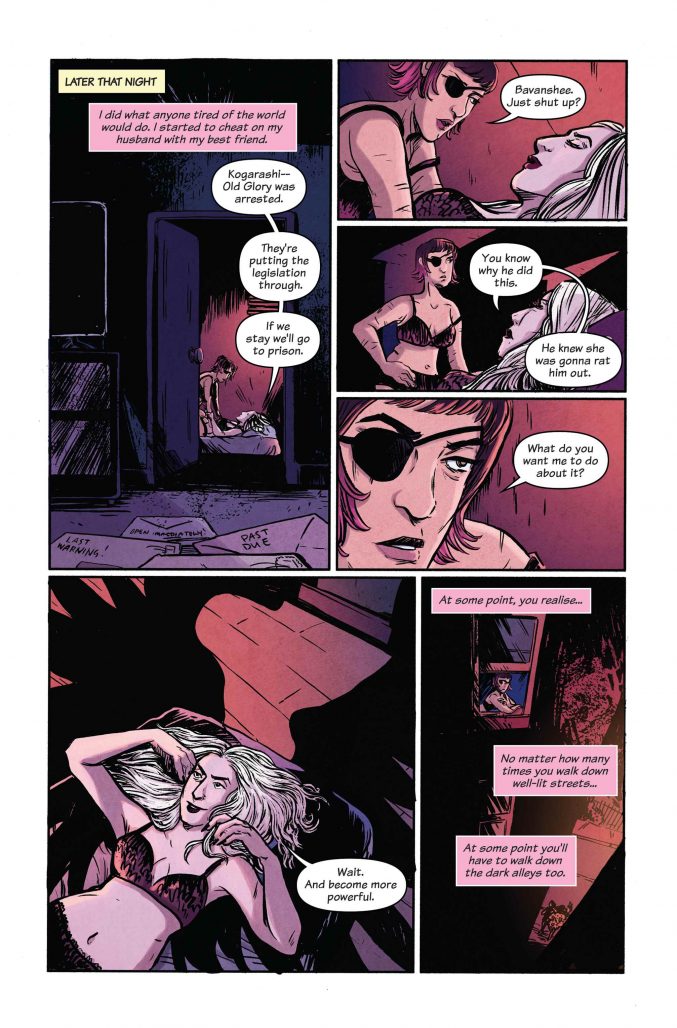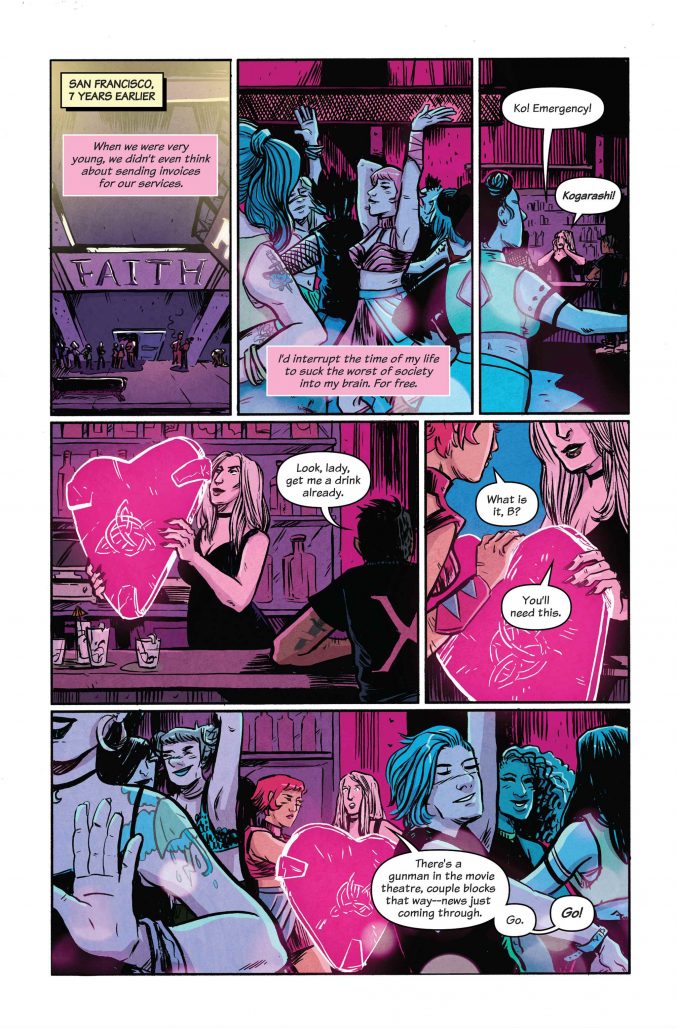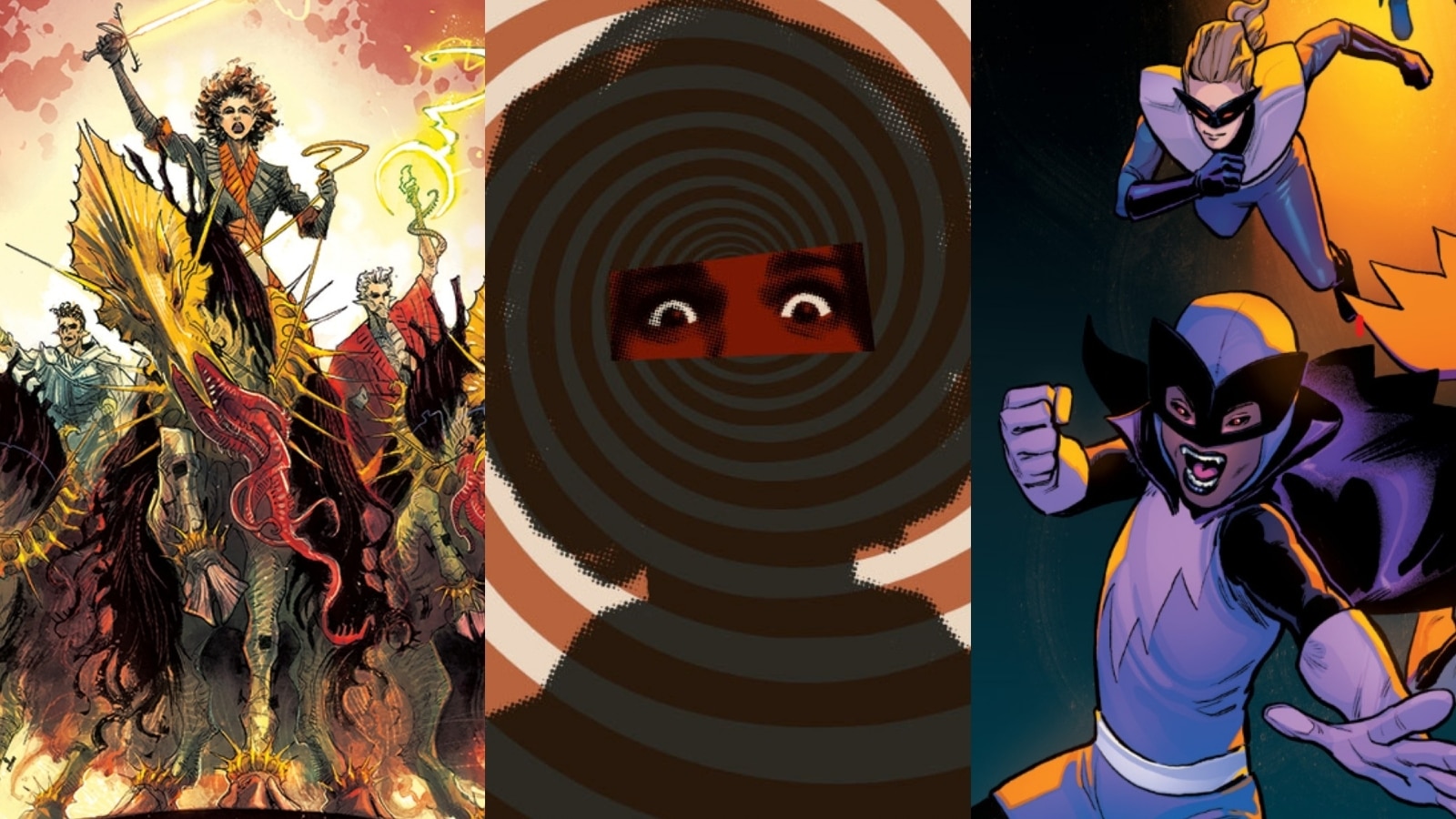Women make tough choices in how they live, how they work, and how they cope emotionally when measured in the public eye. But for women with extraordinary powers living in a world that fails to appropriately value their worth? They disappear and become productive members of society. And they seek vengeance in a big “Me Too” way against their boisterous male counterpart. Welcome to the ComiXology Originals’ series, The Final Girls, a wry socio-political commentary on superheroines who have been relegated to independent contractor status by their national governments.
The Final Girls is the comics debut for journalist Cara Ellison. Ellison joins illustrator Sally Cantirino to chat with The Beat about the making of the series, and why Scotland was the perfect setting to explore the female struggle.
Nancy Powell: Where did the idea for the series come from, and how did you all come together for this project?
Cara Ellison: I had the idea when I first saw Top Of The Lake season one, Jane Campion’s crime series about gender and power and nature. I remember an English professor of mine had recommended The Piano, which is another Jane Campion work (which made her the only woman to ever receive a Palme d’Or), and I remembered what a powerful reflection on the price of women’s bodies it is, the bargains women make, the way that everything in the film tells the story of an invisible structure bearing down on Ada. That structure is still there in Top of the Lake, but it becomes more visible towards the end of the story.
I wanted to write a story that exposes a lot of these invisible pressures myself, and how physical strength might be completely irrelevant in a world where these things are actually structural, psychological problems. I wrote the first issue of The Final Girls in 2015, based around ‘retired’ (they’re late thirties!) women superheroes, and I think I showed it to comics editor Katie West a while afterwards. Katie loved it and immediately took it on. She found all of our brilliant collaborators. The comic would not exist without Katie.
Powell: It seems like the series addresses a number of social issues, like sexual assault and gender equality. Was that deliberate in the evolution of the series?
Ellison: It wasn’t really an evolution of the series so much as part of the worldbuilding. I wanted to write an ensemble story about women who were slightly more complex than someone who puts on the suit and goes out to fight crime, but still get to use the superhero metaphor for what I wanted. So I wanted to have the cake and eat it too. Basically, I wanted to make the superhero metaphor work on multiple symbolic levels while also making the characters extremely human, a bit broken, and therefore much more likely to tell a joke. Gallows humour is something my characters have a mastery of. I think people are at their funniest when things are bad.
Powell: What was it about Scottish mythology that made Scotland the perfect setting for The Final Girls?
Ellison: Well, for example, Banshee is a Marvel Comics character and he’s been lifted from Irish mythology. I thought I’d borrow from my own culture – it would save me from co-opting anything that wasn’t mine to steal. It’s strange to me that people might think Scotland is not a place that is suitable for mainstream comics stories when Moira MacTaggert is supposedly hanging out here somewhere. (Admittedly the ’90s X-Men cartoon thought she had a bad Irish accent, but I liked it so much I don’t think I noticed when I was a kid.)
The comic isn’t much about Scottish mythology. Even though it’s not as discussed these days, Scots are generally quite superstitious in the rural areas, and I like it like that. So these stories of selkies and monsters, fairies who steal your stuff, ‘Clootie trees’ and ‘faerie circles’ and ‘thin places’ in forests are mostly just something that people live amongst in Scotland and I think it’s mostly unremarkable for people to acknowledge them. I was writing the comic with Scots in mind too, so when they see for example a superhero called ‘Selkie’ they are quite aware she can change her form already, even if they are not sure of what my universe’s rules are. That’s part of good superhero naming, I guess. When you hear about a hero called ‘Spider-Man’ you’re pretty sure it’s a spider and man hybrid.
Powell: Cara, is this your first comic series? How did your work as a video game critic prepare you for writing a comic book series?
Ellison: Yes, it’s my first comic series, although I have collaborated with artists before on short comics like the one [for Secret Loves of Geeks] I did with Maddison Chaffer. I mean, I think the short answer is that being a video game critic didn’t prepare me for it – although I left journalism over six years ago now (and I am aware my wikipedia page hasn’t been updated since, leaving everyone baffled as to my existence). I now write and design videogames full time, such as for Dreams on PS4, for the comic book-inspired Void Bastards, and for RPGs like Dishonored 2 and Vampire the Masquerade: Bloodlines 2, and those certainly did prepare me well for comics.
The structural limits of comics and games are what is so appealing about writing for the medium. When someone in the studio says to you, ‘you can only have two characters, and the quest has to involve only combat and two new items and you have to design, write and implement it in a week’ that is incredibly similar to someone saying to you, ‘you have only 22 pages in which to tell a complex story involving six characters and the creeping invasiveness of late capitalism attempting to crush their hearts’. Because boy, do you have to plan. And every single word is planned in the entire structure, or you get to the end and come up short and the point doesn’t land.
Powell: Sally, how much research did you and Gab [Contreras] have to do to bring Cara’s script to the page?
Sally Cantirino: Cara did a great job of giving me reference photos and the names of specific places she had in mind. The rest was the magic of Google. I’ve never been to Scotland and I hope it’s not TOO obvious to Scottish readers when they look at my art! I gave Gab some color notes when I had specifics in mind, but my feeling is always like, I’m not a colorist, I always want to let the colorist shine and do their thing. And Gab did a phenomenal job– she brought all the life to it.
Powell: Is there a particular movie, television series or book series that influenced how you all approached the comic?
Ellison: For me, it was TV like Top of the Lake, but also more mainstream things like Jessica Jones, Garth Ennis comics, some extremely politically charged Alan Moore comics, and a lot of the music stuff was inspired by Zdarsky and Fraction’s Sex Criminals and Gillen and McKelvie’s Young Avengers. I also really admire the cojones of DeConnick and De Landro’s Bitch Planet. I think Kelly Sue really gave me the bravery to attempt something bigger than myself with Bitch Planet – there’s an extraordinary amount of humour in that comic even though it’s about a horrible time some women are having in some far off place.
Cantirino: I think my biggest influences on this project were ’90s Vertigo books like Doom Patrol and Shade The Changing Man, The Hernandez Brothers’ Love & Rockets, and Naoko Takeuchi’s Codename: Sailor V and Sailor Moon manga. All of those were also my entry points into comics as a pre-teen or teenager, too.
Powell: Which character in The Final Girls did you find the most appealing or representative of yourselves?
Ellison: I guess for me any of us could be any of them at different times in our lives. If you have lived life a little bit you might identify with how absolutely exhausted they are, their desire for quiet, a lack of surveillance, a lack of intrusion. Maybe also try to identify with the worst traits of the women and the men in this story – their mistakes and misunderstandings do not necessarily define their futures, and shouldn’t, in a world where punitive action is not the norm. I think the best characters to focus on thematically might be Selkie, who has lived many lives and who can change her appearance when she pleases, and Power – what he chooses to do is obviously important.
Maybe I have written a comic that de-glamourises heroes and makes them wildly undesirable because I’ve tied them to the gig economy… I guess the only hero I’d like to be less than any of them is Ennis’s Dogwelder.
Cantirino: I loved drawing all of them, first of all. I think out of all of them, I identified with Osua the most. I’ve had a tendency throughout my life to put school or work or career first– above friendships or relationships, above dealing with my physical or mental health. That resonated with me, along with Osua’s contentment with being out of the superhero spotlight, she’s over it and just wants to be let alone to do her work! I get it.
Powell: If The Final Girls were to continue, do you think conditions or their relationship would improve enough that the groups get a second chance at superhero redemption?
Ellison: In The Final Girls second chances are uncertain. It does posit the idea that once the internet hates you, or has a record of your fuckups, it is very likely that you will be disposed of and vilified for the rest of your life. People want to project onto perfect beings; that is why fictional superheroes are so alluring. They are fictional – so they can’t screw up unless their creators make it so. If superheroes did exist I imagine they wouldn’t be able to afford full time PR, unless we are talking Tony Stark or Bruce Wayne. So regular people are going to be taking video, filing complaints, and ranting on their blogs and to press about everything you didn’t do, or that car you flattened as collateral and didn’t pay for.
However, I think The Final Girls could work as a kind of disillusioned superhero B team if they ever got offered a crap ton of money. But who would offer them any money? Tough questions. Would they fight Ultron? They’d probably get knocked on their arse. I guess what I’m saying is their next comic in the series is probably them having a party together, downing six pints of wine and puking on the pool table.
All five issues of The Final Girls are available now via Comixology.


